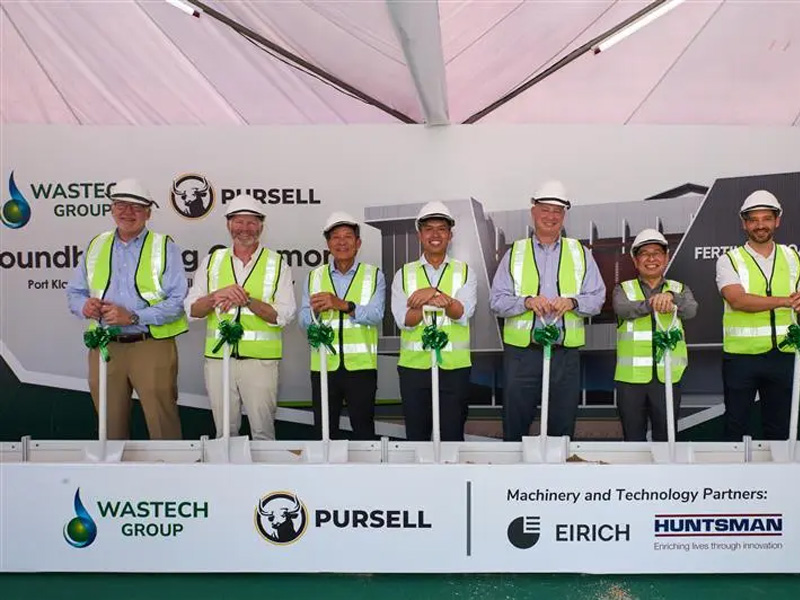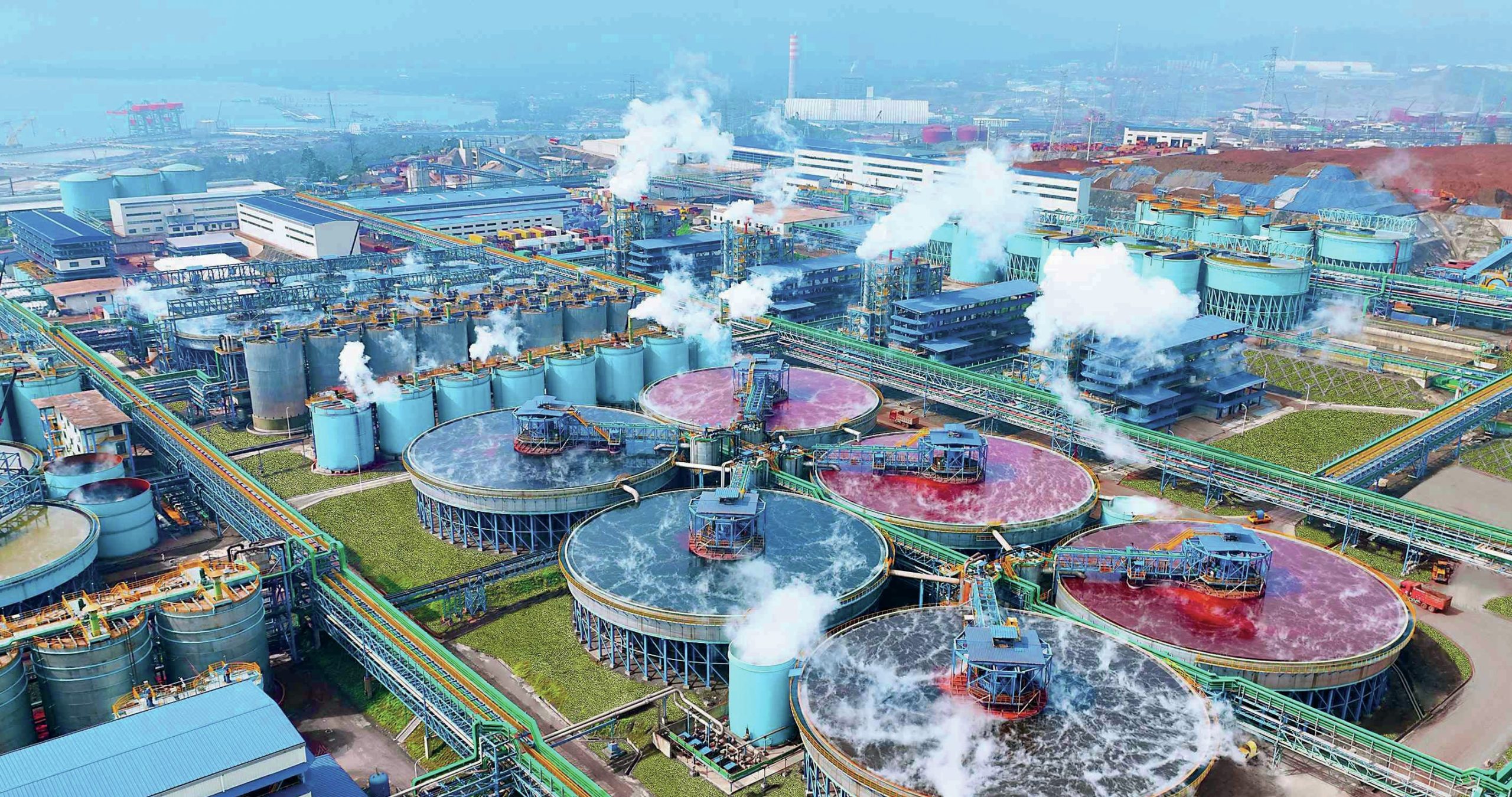Nitrogen+Syngas 389 May-Jun 2024
31 May 2024
Syngas News Roundup
Syngas News
GERMANY
Start-up for electrically heated steam cracking furnace demonstrator
BASF, SABIC, and Linde have jointly inaugurated the world’s first demonstration plant for large-scale electrically heated steam cracking furnaces at BASF’s Verbund site in Ludwigshafen, following three years of development, engineering, and construction work. The three companies signed a joint agreement to develop and electrically heated steam cracking furnaces in March 2021.
Steam crackers play a central role in the production of basic chemicals and require a significant amount of energy to break down hydrocarbons into olefins and aromatics. Typically, the reaction is conducted in furnaces at temperatures of about 850°C. Up to now, these temperatures have been reached by using conventional fuels. The demonstration plant aims to show that continuous olefin production is possible using electricity as a heat source. By using electricity from renewable sources, the new technology has the potential to reduce CO2 emissions of one of the most energy-intensive production processes in the chemical industry by at least 90% compared to technologies commonly used today.
The demonstration plant, which produces olefins, such as ethylene, propylene, and possibly also higher olefins from saturated hydrocarbon feedstock, is fully integrated into the existing steam crackers in Ludwigshafen. The upcoming operation serves the goal of gathering data and experiences about material behaviour and processes under commercial operating conditions for the final development of this innovative technology to industrial market maturity. In two separate demonstration furnaces, two different heating concepts will be tested. While in one furnace, direct heating applies an electric current directly to the cracking coils, in the second furnace, indirect heating uses radiative heat of heating elements placed around the coils. The two electrically heated furnaces together process around 4 tons of hydrocarbon feedstock per hour and consume 6 megawatts of renewable energy.
To support the development of the novel furnace technology, the project was granted €14.8 million by the German Federal Ministry for Economic Affairs and Climate Action under its “Decarbonisation in Industry” funding program. The program is supporting energy-intensive industries in Germany in their efforts to achieve carbon neutrality.
“With the development of electrically operated steam cracking furnaces, we are getting our hands on a key technology that will help to significantly reduce greenhouse gas emissions in the chemical industry. It fills me with pride and joy that we have achieved this success together with our partners SABIC and Linde. The demonstration plant here in Ludwigshafen will provide us with valuable experience on the final step towards the industrial application of this technology”, said Dr. Martin Brudermüller, Chairman of the Board of Executive Directors of BASF SE.
Based on the combined knowledge and intellectual property of the three parties collaborating to develop the new technologies, the demonstration unit in Ludwigshafen will be operated by BASF. Linde was responsible for the engineering, procurement, and construction of the plant. Linde will in the future commercialise the developed technologies under the new trademark STARBRIDGE™ , enabling the petrochemical industry to decarbonise by replacing conventional fired technologies.
CHINA
Methanol engines for Chinese market
MAN Energy Solutions and the China Classification Society (CCS) have signed an agreement over MAN’s new L21/31DF-M dual-fuel methanol engines, designed at the company’s Danish site in Holeby. It provides for a collaboration between the two companies that will support the new engine in the Chinese market, including all activities associated with its planned type approval test in China in Q4, 2024.
Jiang Botao said: “MAN Energy Solutions, as a globally-renowned ship equipment manufacturer, takes the lead in the technological advancement of marine alternative-fuel engines and has long been one of CCS’s most important partners. The introduction of the MAN L21/31 DF-M methanol dual-fuel engine provides shipowners with more choices to achieve their decarbonisation goals. We much appreciate MAN Energy Solutions’ contribution and believe that the collaboration between it and CCS in alternative-fuel engines will surely make further contributions to a more sustainable future for the global maritime industry.”
ITALY
Collaboration on ‘power to X’ projects
Maire subsidiary NextChem has agreed to collaborate with Vallourec on the integration of NextChem’s proprietary green ammonia technology with Vallourec’s Delphy hydrogen storage technology, and its subsequent commercialisation. The two partners will study how to combine the Delphy storage solution in “Powerto-X” and green hydrogen projects where NextChem is involved as technology provider worldwide. Upon completion of the joint feasibility studies, NextChem will act as the exclusive global licensor of the technology package integrating its small-scale green ammonia production technology with Vallourec’s hydrogen storage system. The commercialisation of the technology package will be carried out through one of NextChem’s subsidiaries.
NextChem has also signed a binding agreement to acquire 100% of GasConTec Gmbh, a German company specialising in technology development and process engineering. GCT owns over 80 patents and significant know-how in the synthesis of low carbon products such as hydrogen, ammonia, methanol, olefins, gasoline and integrated methanol/ammonia processes. In particular, the company’s portfolio includes autothermal reforming to produce low carbon hydrogen with very high rates of carbon capture.
The company has also recently finalised the acquisition of 80% of HyDEP S.r.l. and 100% of Dragoni Group S.r.l., through its subsidiary NextChem Tech, both recognised engineering service providers
specialising in the mechanical and electrochemical sectors. Their offer encompasses a broad spectrum of services, ranging from process and mechanical design to validation, prototyping, and certification of water electrolysis, stacks, and systems. NextChem will combine its technological know-how with HyDEP and Dragoni Group’s competences in electrochemistry to develop and implement its proprietary solutions for green hydrogen production. Moreover, HyDEP’s experience in designing and manufacturing small-scale water electrolysis systems will contribute to the development of a hydrogen-based retail network to support the decarbonisation of small-medium enterprises as well as the mobility sector.
NETHERLANDS
Hydrogen import facility for Rotterdam
Global Energy Storage (GES) and Provaris Energy Ltd (Provaris) have entered a collaboration agreement to develop a gaseous hydrogen import facility at the GES terminal in Rotterdam. GES is developing a multi-client, multi-product terminal in Rotterdam, able to import both refrigerated ammonia and compressed hydrogen, with redeliveries into barges, rail, truck and the H2 grid (HyNetwork) operated by Gasunie.
Under the collaboration, GES and Provaris will complete a comprehensive prefeasibility study to demonstrate the technical and economic viability of berthing and unloading of Provaris’ H2Neo compressed hydrogen carriers. Activities will also include the joint marketing of the proposed facility where Provaris will be responsible for the transportation of the hydrogen in the H2Neo carriers and GES responsible for the discharge and injection into the hydrogen grid.
Both parties have a shared belief that the GES terminal in Rotterdam is an ideal site for bulk scale import of green hydrogen given the early connection to the HyNetwork grid for gaseous supply to industrial users in the Port of Rotterdam and key industrials users in Europe. The companies are committed to advancing an energy efficient and timely supply of green hydrogen to industrial users in Europe to support ambitious decarbonization goals.
Peter Vucins, CEO of GES commented: “This collaboration with Provaris showcases the types of partnerships that GES is pursuing to facilitate the Energy Transition through our contribution with storage and logistics solutions, at Rotterdam as well as other existing and future locations. I welcome the opportunity to work closely with Provaris to develop a cost competitive import solution for Rotterdam and European energy customers.”
During 2024 GES and Provaris will complete pre-feasibility level studies focused on the jetty facilities to discharge the H2Neo carrier, along with scavenging compression, storage, HyNetwork grid connection, risk and safety, emissions, and other permitting and environmental considerations.
Provaris has advanced the H2Neo hydrogen carrier through an extensive FEED package design approval in December 2022, with a Prototype Tank under construction and testing program underway in Norway to support a final construction approval from Class targeted for mid-2024.
UNITED STATES
Fischer Tropsch production for SAF plant
DG Fuels has chosen Johnson Matthey and bp’s co-developed Fischer-Tropsch (F-T) CANS™ technology for its first sustainable aviation fuel (SAF) plant. Located in St James Parish, Louisiana, it will be the largest announced F-T SAF production facility in the world, with a planned capacity of 13,000 bbl/d, providing – after blending to 50% – of producing enough SAF for more than 30,000 transatlantic flights annually. DG Fuels has already secured offtake agreements with Delta Air Lines and Air France-KLM, and has a strategic partnership with Airbus to scale up the use of SAF globally.
The plant is the largest deployment of F-T CANS to date, seven times larger than any previously announced project using this technology. DG Fuels is an emerging leader in renewable hydrogen and biogenic based, synthetic SAF and diesel fuel. The proposed $4 billion DG Fuels plant is planned to produce 600,000 t/a of SAF per year when fully operational. DG Fuels is planning 10 more SAF production plants across the United States. These would be modelled on the Louisiana plant with JM and bp as the partners of choice for these facilities.
The fuel at the Louisiana plant is expected to be produced from waste biomass. DG Fuels is projected to purchase around $120 million of sugar cane waste annually, a third of which is planned to be purchased from St. James Parish farmers. JM and bp’s FT CANS technology converts the synthesis gas derived from this biomass to synthetic crude, which is then further processed to produce the synthetic kerosene that is then blended with conventional jet fuel to produce SAF.
Current international certification for this SAF requires a blend of up to 50% with fossil kerosene to create “drop-in SAF”. Based on a typical widebody aircraft fuel consumption rate travelling the distance from London to New York, the plant’s planned SAF production capacity, after blending, is equivalent to the fuel required for over 30,000 transatlantic flights annually, equivalent to more than 3% of annual traffic flying on that route currently. The plant is expected to start production by 2028.
Maurits van Tol, Chief Executive for Catalyst Technologies at Johnson Matthey, said: “The size of this project is truly exciting and would help take the industry closer to wide-scale use of SAF. DG Fuels has ambitious plans and the fact it has secured agreements with major airlines demonstrates there is appetite in the market. Our FT CANS technology enables cost-effective deployment across a wide range of project sizes. We look forward to working with DG Fuels as a long-term partner for SAF production.”
HUNGARY
MOL inaugurates new green hydrogen plant
MOL Group has inaugurated a 10 MW capacity 1,600 t/a green hydrogen plant in Százhalombatta. The €22 million investment will reduce the Danube Refinery’s carbon dioxide emissions by 25,000 t/a. The electrolysis unit, created by Plug Power, will gradually replace natural gas-based hydrogen production at the refinery, which currently accounts for one sixth of the MOL Group’s total CO2 emissions. The plant will start producing in the second half of 2024: MOL will use the green hydrogen primarily in its own network for fuel production.
“Using this technology, we are able to achieve the same emissions reduction as if we took roughly 5,500 cars off the road overnight. Today, our new green hydrogen plant is only making MOL’s industrial operations greener, but tomorrow it will offer solutions for the whole industry and hydrogen mobility. After Száhalombatta, we will take the technology to the other two fuel production units of the group to make the fuel production process more sustainable at each of MOL Group’s refineries,” said József Molnár, CEO of MOL Group, at the inauguration ceremony of the new green hydrogen plant.






